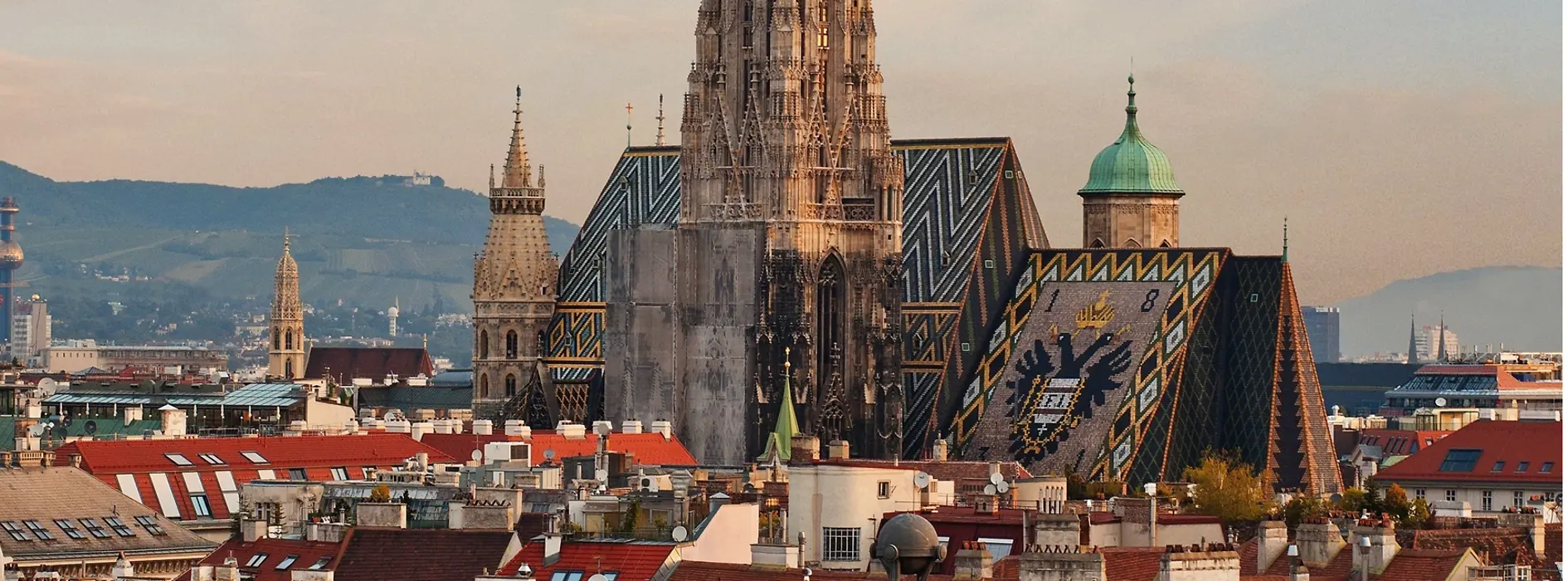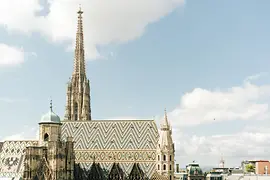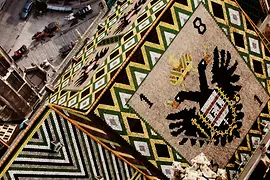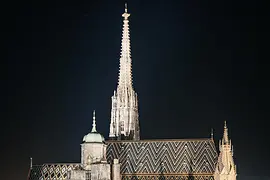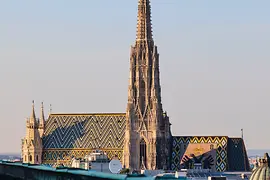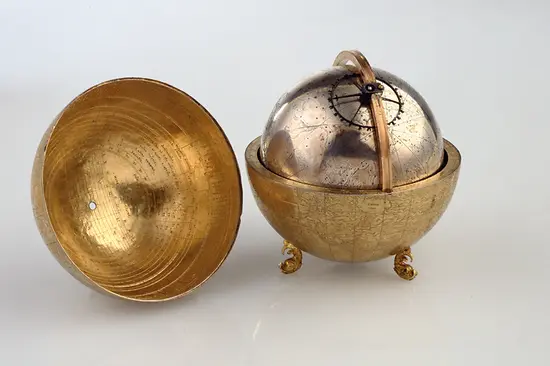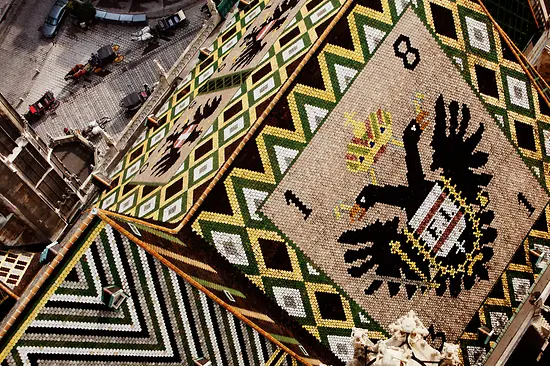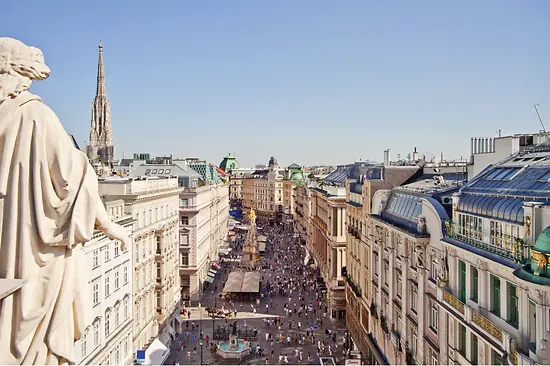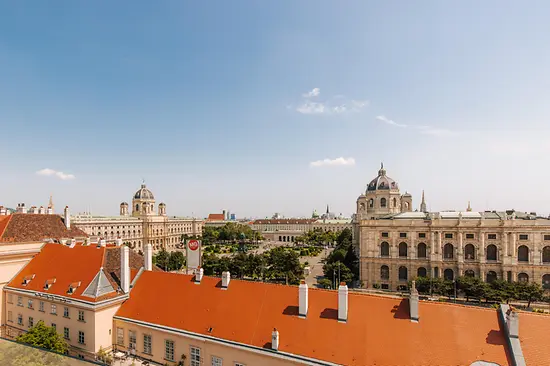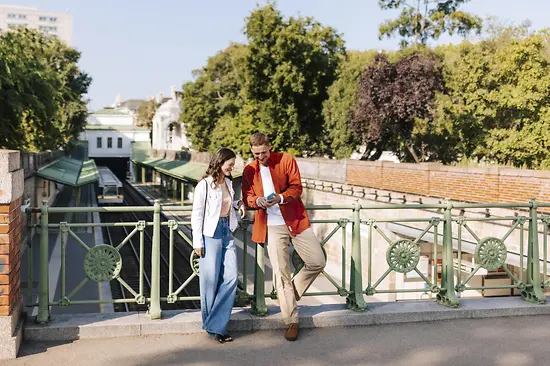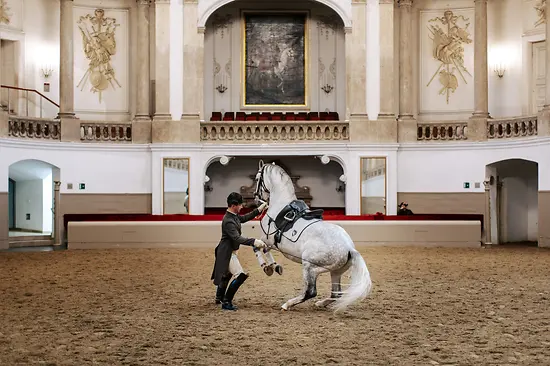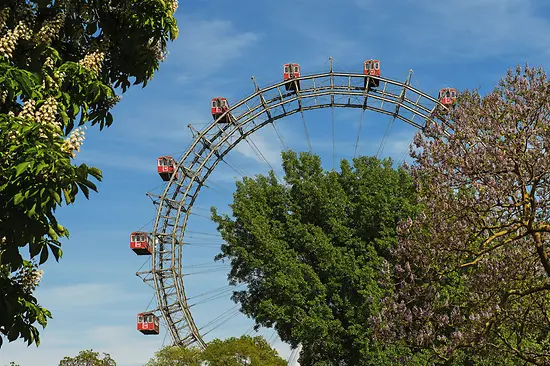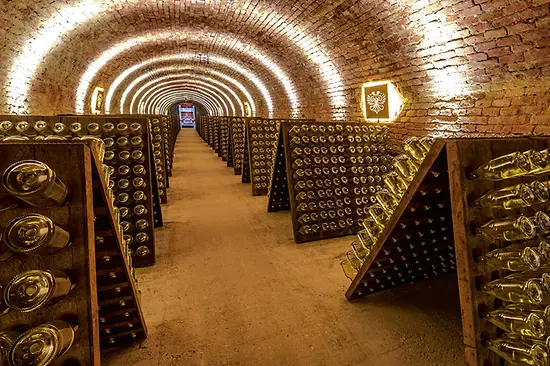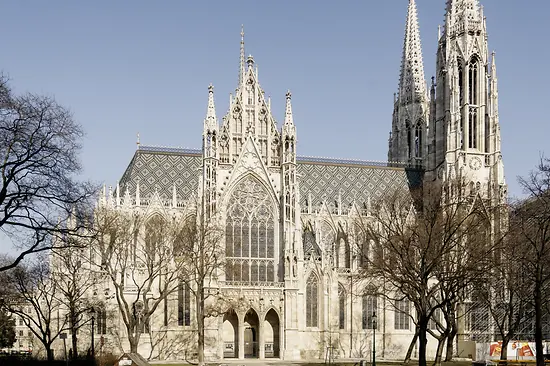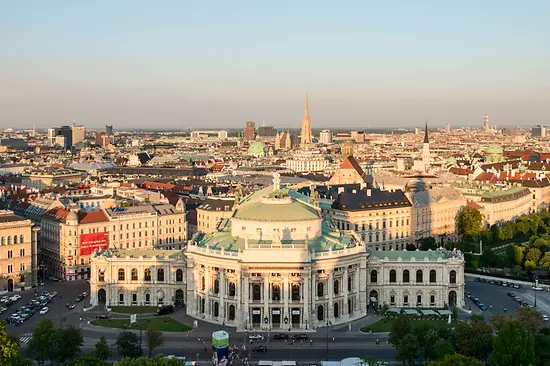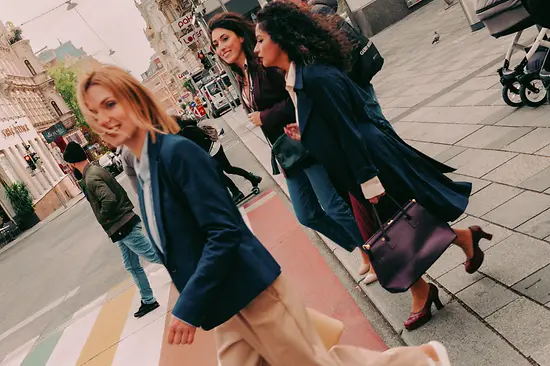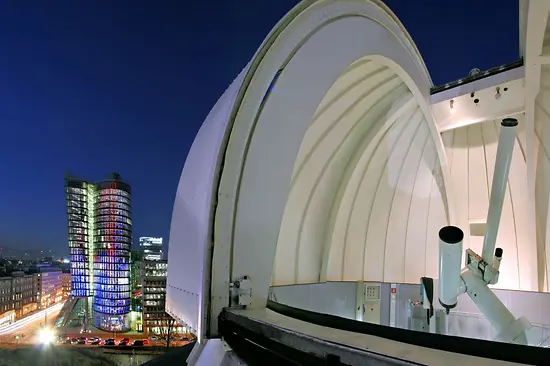St. Stephen's Cathedral
St. Stephen’s Cathedral is not only Austria’s most important Gothic building. The Steffl, as it is affectionately known in Vienna, is much more than that. It is a landmark, a symbol of identity and synonymous with the reconstruction of the Republic after the Second World War. Construction of St. Stephen’s Cathedral began in the 12th century and its interior changed repeatedly over the centuries until it was finally given its current Baroque appearance. The tallest of its four towers is the south tower at 136 meters. The tower room, from which there is a gigantic view across Vienna, is reached via 343 steps. A total of 13 bells hang here. However, the best known of them, the Pummerin, hangs in the 68 meter-tall north tower. It is the second-biggest free-swinging chimed church bell in Europe. On the roof of St. Stephen's Cathedral, colorful roof tiles were laid to create the Royal and Imperial double-headed eagle and the coat of arms of the city of Vienna. St. Stephen's Cathedral also attained a particular reputation due to Vienna's most famous sweet treat: It soars above the brand logo on the pink-red packaging of the Manner Schnitten slices.
Display alternative text
Video on St. Stephen's Cathedral, its history and its significance for Vienna and Austria. A tour from the roof to the catacombs under the Steffl, including the Vergilius Chapel. Other topics: Pummerin, Mozart's wedding, Vivaldi's funeral.
In addition to valuable altars and side chapels, the impressive cathedral treasure can also be seen, including relics decorated with gold and precious stones, monstrances, liturgical texts and books as well as vestments. Numerous important people were also given their final resting place in St. Stephen's Cathedral: Emperor Friedrich III. was buried in an impressive marble sarcophagus. The tomb’s cover slab alone weighs eight tonnes. Prince Eugene of Savoy has his final resting place in a private chapel. Buried in the catacombs of St. Stephen's Cathedral is Duke Rudolph IV, "the founder", who laid the foundation stone for the Gothic reconstruction of the cathedral in 1359. It is also the burial site of many other Habsburgs and Viennese cardinals and archbishops.
Guided tours of the cathedral and the catacombs are offered on a regular basis, including for children. For information, go to: www.stephanskirche.at
- Stephansplatz, 1010 Wien
- http://www.stephanskirche.at
Opening times
- Mo - Sa, 06:00 - 22:00
- Su, 07:00 - 22:00
- on holidays, 07:00 - 22:00
Guided tours
Guided tour of the Cathedral, daily
- 3.30 pm, approx. 30 minutes
Guided tour of the Cathedral english, Monday - Saturday
- 10.30 am, approx. 30 minutes
Guided tour of the catacombs, every half an hour
- Monday - Saturday, 10.00, 11.00, 11.30 am
- Monday - Saturday, 1.30 - 2.30, 3.30 - 4.30 pm
- Sunday and holidays, 1.30 - 2.30, 3.30 - 4.30 pm
Elevator to the Pummerin
- January - March, 9 am - 5.30 pm
- April - December, 9 - 20.30 pm
Ascend the South Tower of the Cathedral
- daily, 9 am - 7 pm
Evening tour including tour of the roof
- The schedule of the evening tours can be found on the website of St. Stephen's Cathedral.
Accessibility
no steps (Double swinging doors 120 cm wide)
3 Steps (Double swinging doors 90 cm wide)
Seeing eye dogs allowed
North Tower: access via elevator only (door width: 65 cm) and 12 steps (not wheelchair-accessible).
South Tower: 343 steps (not wheelchair-accessible).
Parking space for visitors with disabilities (Singerstrasse).
Evening guided tours with roof tour and guided tours of the catacombs are are not wheelchair-accessible.
